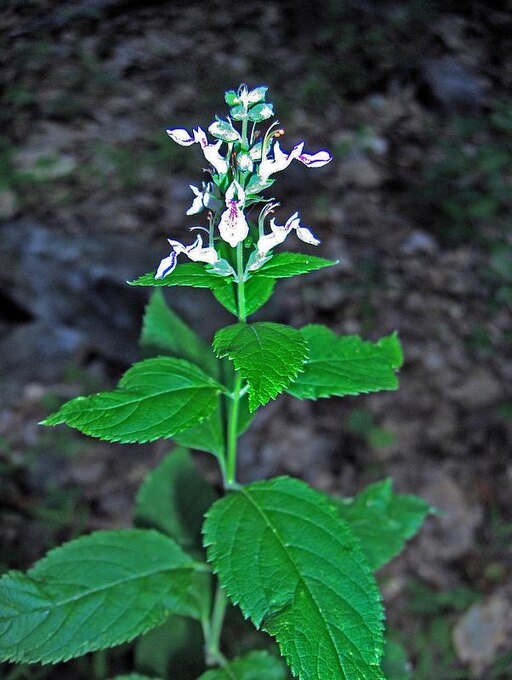Classification System: APG IV
Superregnum: Eukaryota
Regnum: Plantae
Cladus: Angiosperms
Cladus: Eudicots
Cladus: Core eudicots
Cladus: Asterids
Cladus: Lamiids
Ordo: Lamiales
Familia: Lamiaceae
Subfamilia: Ajugoideae
Genus: Teucrium
Species: Teucrium canadense
Varieties: T. canadense var. occidentale
Name
Teucrium canadense L.
References
Linnaeus, C. 1753. Species Plantarum. Tomus II: 564. Reference page.
USDA, ARS, Germplasm Resources Information Network. Teucrium canadense in the Germplasm Resources Information Network (GRIN), U.S. Department of Agriculture Agricultural Research Service.
Vernacular names
English: Canada germander, American germander, creeping germander
Teucrium canadense, commonly known as Canada germander,[1] American germander or wood sage, is a perennial herb in the family Lamiaceae. It is native to North America where it is found across the contiguous states of the United States and in much of Canada.
Description
American germander is a robust perennial plant with a fibrous root system, forming clumps up to 3 ft (90 cm) tall. The upright squarish stems have small side branches, and send out rhizomes at the base. The leaves are opposite, stemmed lower on the plant and unstemmed on the upper sections of the stalk. They are ovate or lanceolate, deeply veined and coarsely toothed, up to 5 in (13 cm) long and 2.5 in (6 cm) wide. The terminal inflorescence contains numerous whitish or pale lilac lipped flowers with large shelf-like lower lips. The fruits contain four pitted seeds covered with white hairs.[2]
Distribution and habitat
The species is native to North America. Its range extends throughout the 48 contiguous states of the United States, and it is also present in much of Canada.[3] It is a common plant, growing in moist grassland, at the edges of forests, in thickets, on river verges and at the edges of marshes. It also grows on wasteland, in poorly-drained areas and beside roadside ditches, and can be somewhat invasive.[2]
Ecology
The flowers of American germander are adapted for pollination by insects with long tongues, the lower lip providing a platform on which the insects can land. Pollinators include bumblebees, honey bees, digger bees, cuckoo bees and megachilid bees, and the flowers are also visited by flies and butterflies and occasionally by hummingbird moths and hummingbirds.[2] The foliage is unappealing to grazing animals because of its bitter taste.[2]
Uses
American germander contains a number of chemicals with pharmacological properties, such as flavinoids, diterpenoids, tannins, bitter aromatics, volatile oils and glycosides, including saponins. The earliest known use of the plant was by Native Americans who ground the leaves to prepare a herbal tea for use as a diuretic and to promote sweating. The green parts of the plant are also used as an antiseptic wound dressing and made into a tincture for gargling.[4]
Etymology
The genus Teucrium honors King Teucer, king of Troy, who was first to use one of the species of plants to relieve stomach pain and gout. The specific epithet canadense refers to the plant being native (in part) to Canada.[5]
References
"Teucrium canadense". Natural Resources Conservation Service PLANTS Database. USDA. Retrieved 24 September 2016.
"American germander". Wildflowers of Illinois. Retrieved 23 September 2016.
"American Germander, Wood Sage, Canada Germander - Teucrium canadense". Wildflowers of the United States. Retrieved 23 September 2016.
"Teucrium canadense". The Medicinal Herb Gardens at ONU. Ohio Northern University. Retrieved 23 September 2016.
"Teucrium canadense". Missouri Botanical Garden. Retrieved October 6, 2016.
Retrieved from "http://en.wikipedia.org/"
All text is available under the terms of the GNU Free Documentation License


